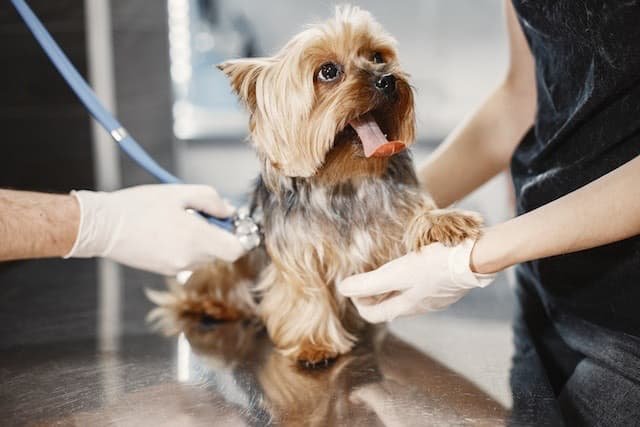TABLE OF CONTENTS
Downer Cow Syndrome (DCS)
Downer cow syndrome (DCS) is a ischemic myopathy of large muscles of pelvic limbs and ischemic neuropathies of obturator or sciatic nerve or its branches secondary to prolonged recumbency associated with milk fever or dystocia; injury of bones, joints, and muscles; undetermined etiologies. So any cow that remains in sternal recumbency for more than 24 hours after initial recumbency and after treatment with primary medical problems.

- Alert downer cows: Cows which are mentally alert, doesn’t show the signs of systemic illness or depression, that are able to drink and eat and maintain themselves in sternal recumbency these cattle’s are called as alert downer cows.
- Non-alert downer cows: Cows with moderate to severe mental obtundation and abnormal vital signs that frequently are unable to maintain sternal recumbency and appears systemically sick and depressed. Those cows are called as non-alert downer.
- Non-ambulatory cows: Which means livestock or an animal that is unable to stand without assistance or to move without being dragged regardless of size/age.
- Creeper cows: The term used to denote alert recumbent cows that are unable to bear weight on their hind limbs but that use the forelegs to propel themselves over short distances.
- Compromised animal: Animal this is reduced capacity to with stand the stress of transportations due to injury, fatigue, poor health, distress and old age.
Etiology
Downer cow syndrome is a complication of the recumbency associated with milk fever. A delay of 4 hours or more in that treatment of cows with milk fever may result in ischemic necrosis of the muscles of the pelvic limbs. Traumatic injury to leg muscles at the time of parturition or when the cow is unsteady and falls during the first stage of milk fever will also result in the inability of the cow to stand following treatment of milk fever.
Epidemiology
1. Occurrence:
- The disease is most common in dairy cows and typically occurs within the fist 2 or 3 days after calving, often immediately following an episode of milk fever.
- Other debilitating conditions of periparturient cows that can be associated with persistent recumbency include acute coliform mastitis, septic metritis, and acute rumen acidosis (grain overload).
2. Complication of Milk Fever:
- Prolonged recumbency after an episode of clinical milk fever either because of a delay in administration of proper treatment or delayed response to treatment is considered the most common primary cause of downer-cow syndrome
3. Traumatic injuries to Pelvis and Pelvic limbs:
- Directly related to parturition (e.g. calving paralysis), be associated with muscle weakness and an insecure gait (e.g. in hypocalcemic cattle), or be the result of an inadvertent accident.
- Calving paralysis refers to a paresis or paralysis one or both hind limbs caused by a lesion of the obturator nerve and/or the lumbar root of the sciatic nerve inflicted during the calving process.
4. Serum electrolyte imbalances:
- Serum electrolyte imbalances or deficits may be associated with prolonged recumbency following treatment for parturient paresis.
| Hypocalcemia | Hypomagnesemia | Hypokalemia |
|---|---|---|
| A persistent hypocalcemia following treatment for milk fever may exist in a downer cow but is unlikely to be the principal cause because treatment with calcium salts does not resolve the signs. | Long-term low-level hypomagnesemia usually manifested by a tetanic hyperesthetic state, which is not part of downer-cow syndrome. | Associated with signs of depression and profound skeletal muscle weakness leading to recumbency |
5. Age and stage of lactation:
- Cows that are older and earlier in lactation are more likely to be recumbent because of hypocalcemia as primary or contributing cause, which has a better prognosis than persistent recumbency for other reasons.
6. Duration of Recumbency:
- Cows that were down for less than 24 hours recovered in 32%of the cases, whereas cows recumbent for longer periods had an 8.2% chance of recovery.
7. Body Condition Score:
- BCS above 4.0/5 around calving were found to be at 4.3 times higher risk to become non ambulatory than thinner cows.
8. Environmental and Management Risk Factors:
- A slippery ground surface is a major risk factor.
- Cattle that walk across slippery floors, especially at the time of calving, may slip and fall and injure the large muscles of the pelvic limbs, resulting in an inability to stand.
Pathogenesis
- A long delay in the treatment of milk fever can result in pressure damage and the subsequent inability to stand after treatment for the primary disease.
- Prolonged recumbency results in pressure damage, which occurs secondarily and is a factor common to all cases.
- Regardless of the cause, the prolonged recumbency results in varying degrees of ischemic necrosis of major muscles of the hind limbs, particularly the semitendinous muscle and muscles caudal to the stifle.
- Prolonged compression of the muscle leads to tissue anoxia, cell damage and inflammation which cause swelling; the swelling causes a further increase in pressure which limits tissue perfusion and leads to a detrimental cascade of events.
- The thick fascial boundaries of the semitendinous muscle prevent expansion which results in pressure-induced compartmental syndrome.
- Sciatic nerve damage due to pressure also occurs and may contribute to downer cow syndrome.
- Damage to the peroneal nerve will result in hyper flexion of the fetlock if and when the cow is able to stand.
- Traumatic injury to limb muscles and nerves immediately prior to parturition or at the time of parturition can also result in prolonged recumbency and subsequent pressure damage.
Clinical Signs
- Cows either make no effort or are unable to stand following treatment for parturient paresis. About 30% of cows treated for milk fever will not stand for up to 24 h following treatment. Those which are unable to stand after 24 h and after two treatments are classified as downers.
- Usually bright and alert, reduced appetite.
- The temperature is normal and the heart rate may be normal or elevated to 80-100 bpm.
- Tachycardia and arrhythmia occur in some cows, especially immediately following the administration of calcium.
- Defecation and urination are normal but proteinuria is common and if marked may indicate extensive muscle damage.
- Some affected cows may make no effort to stand. Others will make frequent attempts to stand but are unable to fully extend their pelvic limbs and lift their hindquarters more than 20-30 cm from the ground. These frequent attempts to stand result in ‘crawling’ or ‘creeping’ along the ground with both hind legs in a partially flexed position and displaced posteriorly – the frogleg attitude.
- Damage to the peroneal nerve is usually present when there is hyperflexion of the fetlock joints, which is evident if and when the cow is able to stand and bear weight on the hind limbs.
- Abnormal position of the legs may also be due to dislocation of one or both hip joints or associated with traumatic injuries surrounding the hip joints with or without rupture of the ligamentum teres.
- Vaginal examination: mandatory ; because it may leads to discovery of decomposed fetus.
- Rectal examination: hip dislocation/ fractures of the pelvis may be palpated per rectum.
- Mammary gland examination: engorged udder and remain un-milked leads to toxic infection with E.coli.
Clinical Pathology
Normal serum calcium and glucose concentrations; Decreased phosphorus and potassium concentrations in cows with depressed feed intake.
Increased Phosphorous and potassium in animals with more pronounced muscle damage and/ or dehydration.
Hematologic examinations are usually unremarkable in early stages of the recumbency.
Creatinine Phosphokinase (CPK):
- CPK normally ranges between 105 to 409 IU/L.
- A value greater than 1000 IU/L indicates severe muscle damage from being down. Maximum CPK activity occurs first 48hrs of recumbency and > 48hrs its activity declines rapidly.
- Prolonged recumbency causes ischemic necrosis of muscles resulting in increased permeability of cell membrane allowing seepage of AST, ALT and CPK enzymes into circulation.
Aspartate Transferase (AST):
- Normal AST range for cow is 60-125 IU/L.
- In downer cows with increased AST activity, concurrent analysis of serum CK activity helps to identify the origin of AST (muscle or liver).
- Increases in AST were likely due to muscle damage, because the correlation between serum CK and AST activity was high.
- AST levels over 200 IU/L flag a guarded prognosis and levels over 500 IU/L can indicate severe muscle damage. Serum AST activity may also have value in diagnosing fatty liver.
Necropsy Findings
- Hemorrhages and edema of the skin of traumatic origin are common.
- The major pathological changes consist of haemorrhages and degeneration of the medial thigh muscles. Haemorrhages around hip joint with or without rupture of the ligamentum teres are also common.
- Local areas of ischemic necrosis of the musculature (gracilis, pectineus, and adductor muscles) occur at the anterior edge of the pelvic symphysis.
- Eosinophilic infiltration of ruptured necrotic thigh muscles of downer cows
- Haemorrhages and edema of the nerves of the limbs (obturator, ischiatic, peroneal, radial) are also common and usually associated with severe muscle damage.
- The heart is dilated and flabby and histologically, there is focal myocarditis.
- There is fatty degeneration of the liver and the adrenal glands are enlarged. Histologically, there are also degenerative changes in the glomerular and tubular epithelium of the kidneys.
Differential Diagnosis
The diagnosis of downer-cow syndrome is typically made by exclusion of all other known causes of recumbency in a cow persistently recumbent for at least 24 hours while having received two courses of parenteral calcium treatment.
Differential diagnoses for alert downer cows: Hypocalcemia, Calving paralysis, Fractures of bone or pelvis, Hip luxation, Hypokalemia, Botulism and Spinal lymphosarcoma (BLV).
Differential diagnoses for non alert downer cows: Hypokalemia, Hepatic lipidosis or puerperal liver coma, Coliform mastitis, Toxic metritis, Hypomagnesemia, Hypovolemic shock, Septic shock, generalised peritonitis, Acute rumen acidosis and Right-displaced abomasum or abomasal volvulus, Hypokalemia, Botulism, Meningoencephalitis and Polioencephalomalacia.
Treatment
Treatment of a non ambulatory cow evidently must focus on the primary cause of recumbency whenever it has been identified, but must also address secondary damage resulting from prolonged recumbency.
- Anti inflammatory Therapy
- Fluid and Electrolyte Therapy: Fluid and electrolyte therapy orally and if necessary parenterally is indicated in patients with inadequate water and feed intake.. Orally administered fluid per treatment should not exceed 40 L to prevent the risk of reflex as a result of increased intra ruminal pressure.
- Bedding and Clinical Care: A sand or dirt pack is the ideal ground surface to facilitate standing when downer cows attempt to stand. The cow should be rolled from side to side every few hours and encouraged to stand a few times daily
- Assisted Lifting to Aid Standing: Several different kinds of cow-lifting devices have been used to assist downer cows to stand. Hip lifters, which fix and tighten over the tuber coxae. Body slings are designed to fit around the abdomen and thorax of the animal and water flotation tanks for the management of non ambulatory cows.
Control
- Immediate and adequate treatment of cows with milk fever.
- Provide comfortable calving area with soft bedding and non slippery flooring.
- Avoid moving pregnant cows too late to calving area.
- Avoid moving fresh cows too early out of calving pen.

